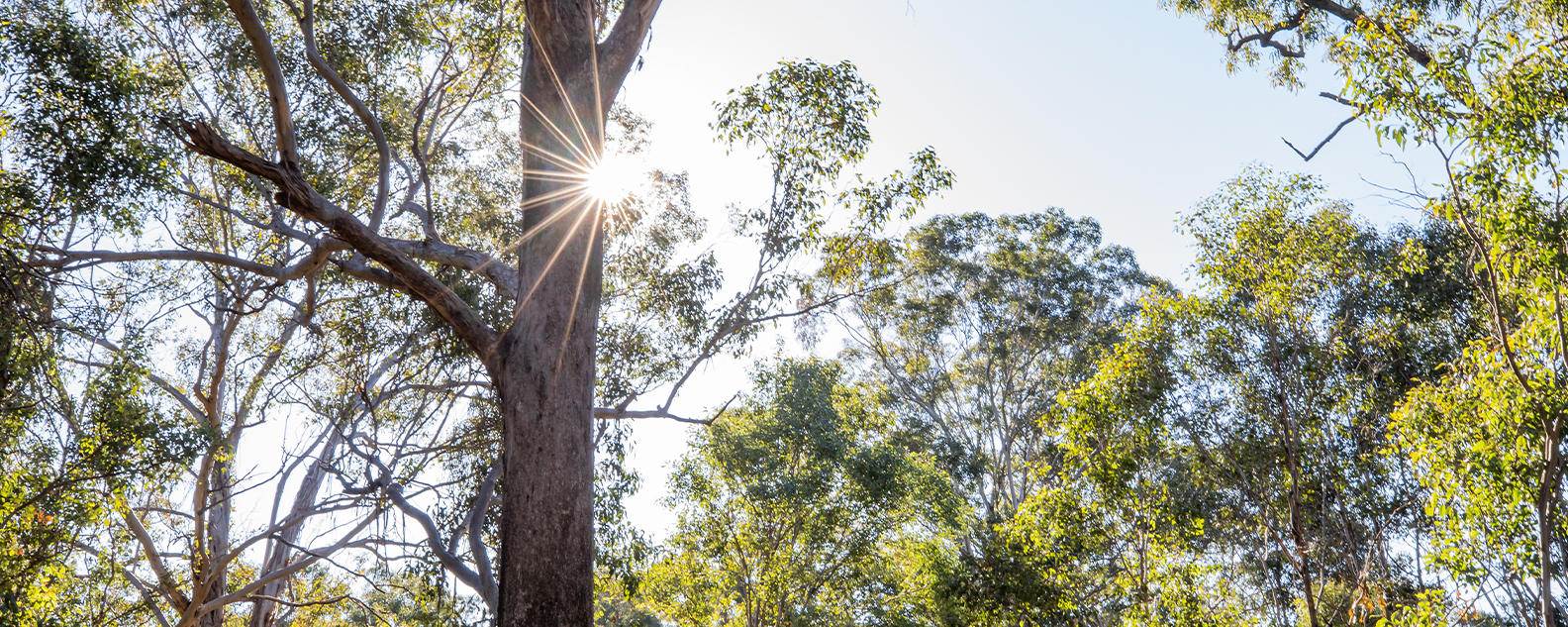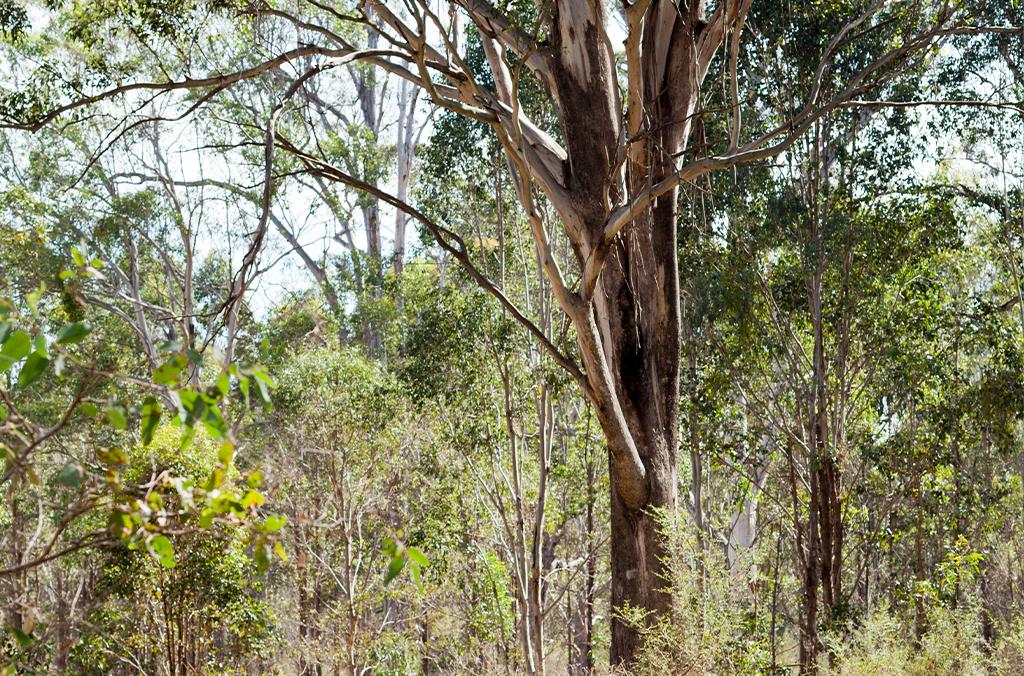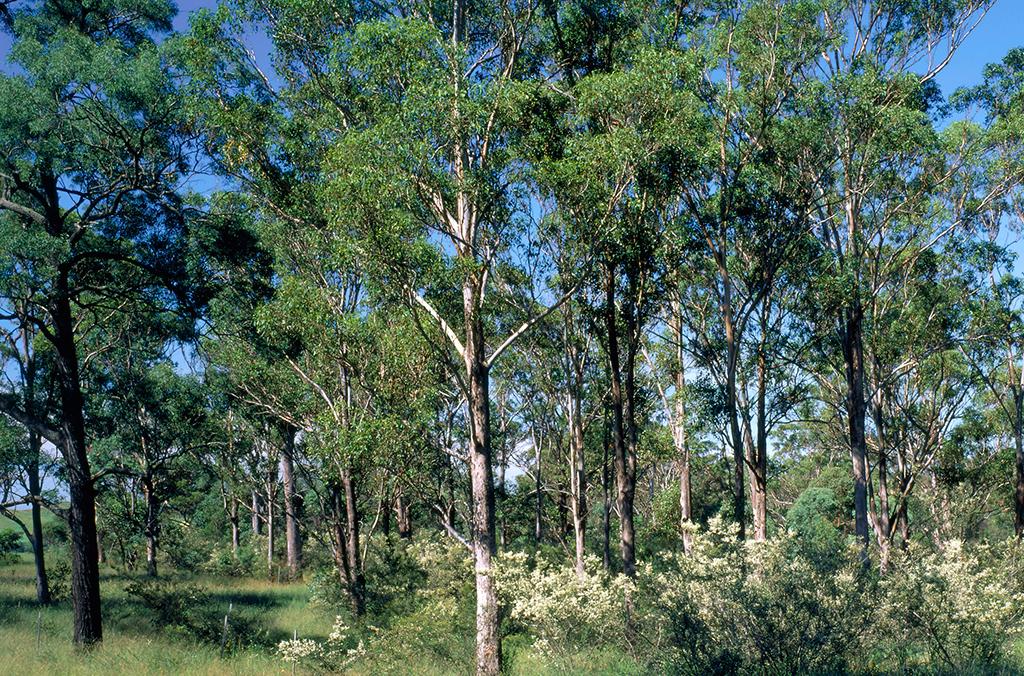The Australian Botanic Garden Natural Areas
The Australian Botanic Garden Mount Annan has an interesting mosaic of natural areas that have their own intrinsic value.

These woodland and native grassland areas contribute to the landscape character and visitor experience of the Garden. These areas of remnant native vegetation are becoming increasingly rare in western Sydney as urban development continues, and the Garden is now important for species conservation and fauna habitat.
About 225 native plant species, some considered rare or endangered, and about 130 exotic species have been recorded as naturally occurring in the Garden. The dominant native species are Forest Red Gum (Eucalyptus tereticornis), Grey Box (E. moluccana) and Narrow-Leaved Ironbark (E. crebra). Introduced species which have naturalised in the Garden include the African Olive (Olea europaea subsp. cuspidata).
A number of endangered ecological communities exist within the Garden and are listed under State legislation.
- Cumberland Plain Woodland
- Western Sydney Dry Rainforest
- Sydney Coastal River Flat Forest
The proper management of these areas is an important part of the work at Mount Annan, and requires consistent control of weeds such as African Olive. This regeneration work is greatly assisted by dedicated community volunteers. Natural areas will be progressively regenerated and linked to form wildlife corridors and provide additional fauna habitat. Birdlife in the Garden has varied considerably since establishment, and the variety of landscapes and vegetation is ideal to observe a great range of birds. Native mammals are also making the Garden home, with wallaroos and swamp wallabies now commonly observed in some sections in the morning and at dusk.

